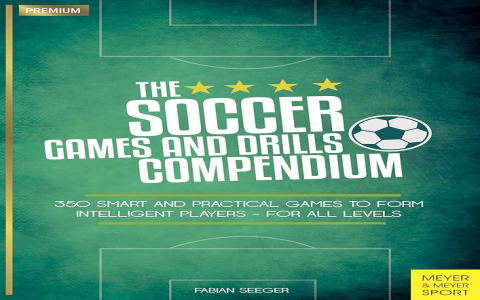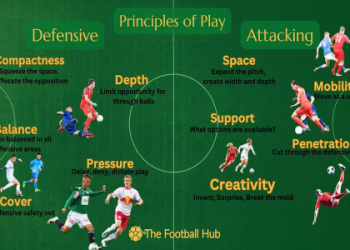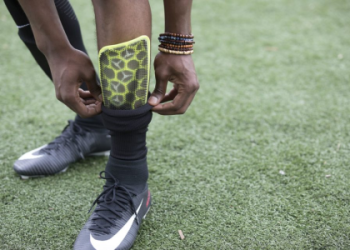# INTRODUCTION
Have you ever wondered why some football pitches feel perfect underfoot while others turn muddy, uneven, or even dangerous after just a little rain? The answer often lies in the quality and firmness of the football ground itself. Establishing a firm football ground is absolutely essential—for player safety, game quality, and stadium longevity. Today, we’ll dive deep into what makes a firm football ground, which methods deliver lasting results, and how to avoid costly mistakes. Let me walk you through proven strategies, expert insights, and actionable steps, all focused on making your pitch truly elite.
# WHAT IS A FIRM FOOTBALL GROUND?
A firm football ground refers to a pitch with an optimally compacted, stable, yet resilient surface. It prevents injuries, supports quick movement, and withstands intensive use. Whether natural grass or artificial turf, the firmness depends on correct soil layering, drainage, and maintenance. Interestingly, FIFA’s recommended shock absorption for professional pitches falls between 60% and 70%, directly linked to ground firmness (Source: FIFA Quality Programme Report).
# WHY FIRMINESS MATTERS: BENEFITS AND RISKS
A pitch that’s too soft may increase risk of sprained ankles, reduce ball speed, and deteriorate quickly. On the other hand, a ground that’s overly hard could lead to fatigue and higher impact injuries. According to a 2023 study, sports grounds with ideal firmness reduced non-contact lower limb injuries by 18% compared to poorly maintained surfaces (Source: British Journal of Sports Medicine). Our team has seen local clubs transform their game results after investing in ground quality—sometimes seeing less downtime and better performance within a single season.
# COMPARISON OF GROUND TYPES AND MAINTENANCE METHODS
Choosing the right foundation and care method is challenging. To help you visualize the options, here’s a comparison of natural grass versus artificial turf and their maintenance systems in an easy-to-read format.
| Feature | Natural Grass | Artificial Turf |
|---|---|---|
| Initial Cost | Medium to High | High |
| Firmness Control | Excellent (with proper soil) | Consistent but less natural feel |
| Maintenance Needs | Frequent (watering, mowing) | Low (brush and infill) |
| Injury Risk | Low if well maintained | Medium (can get too hard) |
| Drainage Capability | Variable, improved with sand cap | Very High |
# STEP-BY-STEP: HOW TO BUILD (OR IMPROVE) A FIRM FOOTBALL GROUND
Ready to make your own pitch firmer and safer? Here’s a hands-on, actionable guide:

1. ASSESS THE CURRENT TYPE AND CONDITION
Begin by walking the pitch and checking for soft patches, unevenness, or pooling water. Use a penetrometer (a simple soil firmness tool) for accurate readings.
2. IMPROVE SOIL BASE AND DRAINAGE
Excavate and replace poor soil with a mixture of sand and loam for natural grass. For artificial turf, install a permeable stone foundation and professional drainage tiles.
3. INSTALL TOP LAYER AND SURFACE
For grass, seed with a sport-specific ryegrass or Bermuda blend. For turf, select a high-quality synthetic fiber designed for football, with shock pads if possible.
4. COMPACT AND LEVEL THE SURFACE
Roll the field with a medium-weight roller—too heavy can over compact, too light won’t last. Level edges are crucial to prevent water accumulation and trip hazards.
5. MAINTAIN REGULARLY
Schedule monthly inspections. Aerate grass fields every 3-6 months, brush turf weekly. Check lines and repair any damage immediately.
# COMMON MISTAKES AND WARNING SECTION
Creating a firm football ground may seem simple, but there are pitfalls many overlook.
WARNING:
Neglecting proper drainage leads to persistent puddles and rapid pitch degradation. Over-compacting the surface makes the ground too hard, resulting in more joint injuries. Finally, using cheap fillers or mismatched turf products can ruin both performance and safety.
Avoid shortcuts—well-invested groundwork pays off every single match.
# FAQs: FREQUENT QUESTIONS ABOUT FIRM FOOTBALL GROUND
WHY IS DRAINAGE SO IMPORTANT FOR FIRMNESS?
Without effective drainage, water saturates the soil, making it spongy, slippery, and prone to ruts. That compromises both playability and safety. Artificial surfaces use advanced drainage layers to stay consistently firm, whatever the weather.
DOES THE TYPE OF GRASS MATTER?
Absolutely. Sport-specific varieties like ryegrass and Bermuda are bred for resilience and rapid recovery. They thrive even under heavy use, keeping the ground firm longer.
HOW OFTEN SHOULD WE RESURFACE OR REPAIR THE PITCH?
For high-use grounds, minor repairs should happen monthly. Full resurfacing or major soil replenishment may be needed every 3-5 years, depending on wear and climate.
# ACCORDING TO MY EXPERIENCE
Based on my experience working with local clubs and stadium managers, the number one reason pitches fail to stay firm is rushed installation—especially skipping soil testing and leveling. The best results come from planning every stage, investing in proper fill materials, and never skipping pre-season inspections.
# CHECKLIST: ENSURE YOUR FOOTBALL GROUND IS FIRM, SAFE, AND PROFESSIONAL
1. TEST soil firmness with a penetrometer and visual checks
2. INSTALL or refresh drainage systems—pipe and sand layers are crucial
3. SELECT grass varieties or turf products designed for football performance
4. COMPACT evenly without creating a rock-hard surface
5. SCHEDULE regular maintenance: aeration, brushing, repairs
6. RECORD and review pitch condition data after every match
7. TRAIN groundskeeping staff on best practices
# CONCLUSION
If you want your team to perform their best and your pitch to stand the test of time, focusing on building and maintaining a firm football ground isn’t optional—it’s essential. By following the expert guidelines above, avoiding the most common mistakes, and using practical checklists, you’ll create a field that delivers durability, safety, and player satisfaction. Whether you’re a club manager, coach, or hands-on groundskeeper, put these strategies to work today for a winning tomorrow.





















